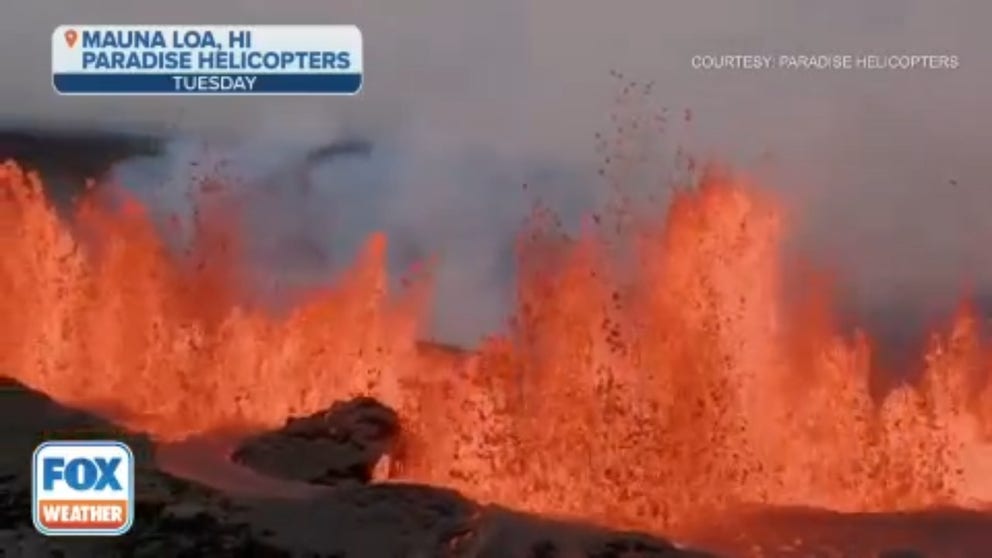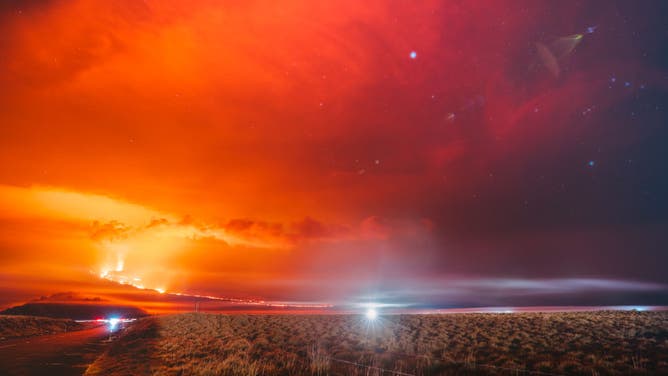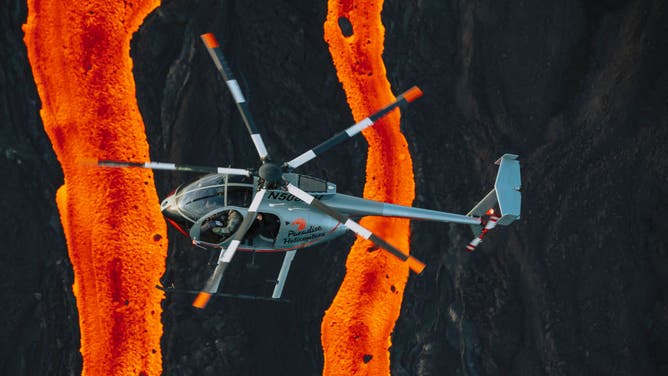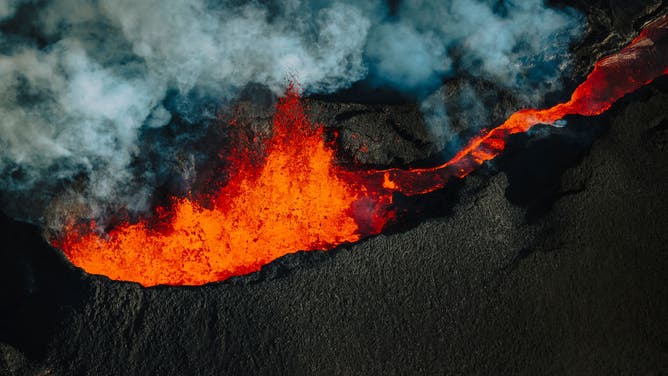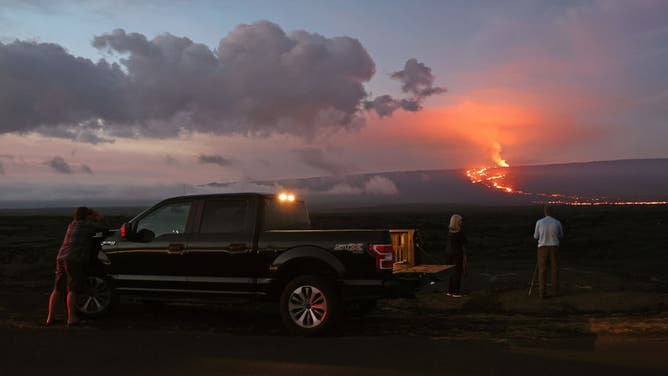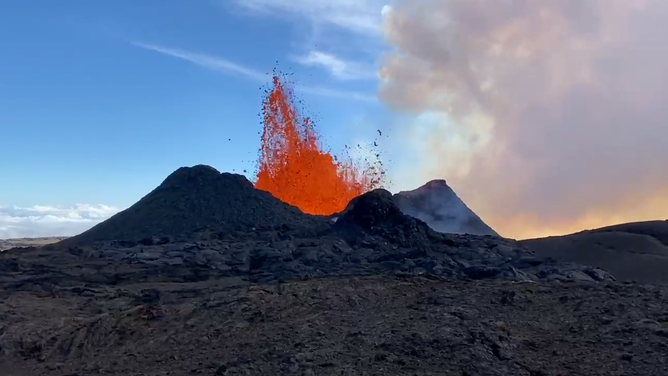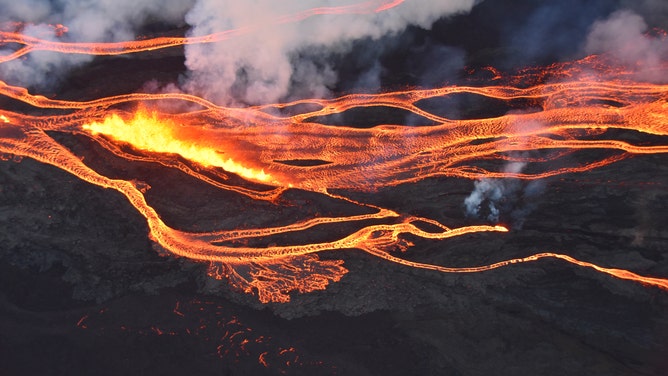Where is the largest active volcano in the world?
Hawaii's Mauna Loa volcano is the largest active volcano on Earth by volume.
Incredible look at lava spewing as Hawaii's Mauna Loa erupts
Here’s an incredible look at the lava spewing as Hawaii’s Mauna Loa erupts for the first time since 1984.
Hawaii's Mauna Loa is the largest active volcano on Earth, with the summit more than 10 miles above its base, according to the U.S. Geological Survey.
Located inside Hawai'i Volcanoes National Park, Mauna Loa makes up more than half of the Big Island, standing at 13,681 feet above sea level, according to the National Park.
How big is Mauna Loa?
About 30,000 feet of Mauna Loa starts from the bottom of the sea, about 1,000 feet taller than Mount Everest, the planet's highest mountain above sea level.
WHAT ARE THE 4 CLASSIC TYPES OF VOLCANOES?
Hawaii's Mauna Kea volcano is taller at 33,500 feet. However, Mauna Loa is much larger by volume, according to the USGS.
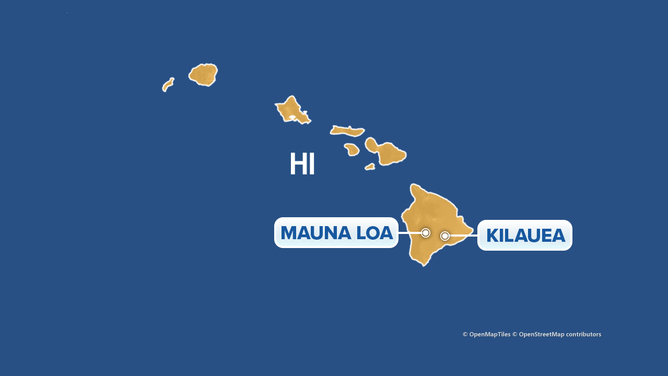
Map notes the locations of Mauna Loa, along with nearby sister volcano Kilauea.
(FOX Weather / FOX Weather)
Mauna Loa is so massive that the sea floor caves in another 5 miles from the weight of the volcano.
How many times has Mauna Loa erupted?
Including the most recent eruption in November 2022, Mauna Loa has erupted 34 times since its first well-documented eruption in 1843, according to the USGS Hawaiian Volcano Observatory.
CAN ONE VOLCANO'S ERUPTION TRIGGER AN ERUPTION AT ANOTHER VOLCANO?
The 12-day eruption in 2022 marked the first since 1984.
About two months before its last eruption, Mauna Loa began displaying increased seismic activity, one of the signs geologists look for when an eruption is imminent.
WHAT HAPPENS BEFORE A VOLCANO ERUPTS?
Since its 2022 eruption, Mauna Loa has been mostly quiet, according to the Hawaii Volcano Observatory, but remains active with increasing seismic activity as recently as October.
What type of volcano is Mauna Loa?
Only about 20 miles from Mauna Loa, Kīlauea is Hawaii's second-largest active volcano and most recently erupted in September.
Mauna Loa and Kīlauea are classic examples of shield volcanoes and are among the most active in the world.
This type of volcano is typically the largest on Earth and covers a broad swath of terrain.
Volcanologists say the great width of these volcanoes is a result of thin lava flows. Eruptions are not considered to be eruptive and usually rank low on the VEI. Threats from landslides and volcanic smog are usually significant for these types of volcanoes.
